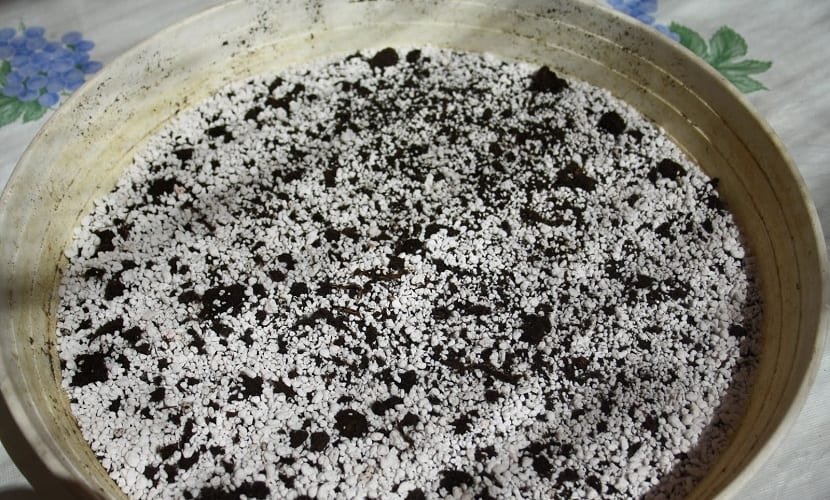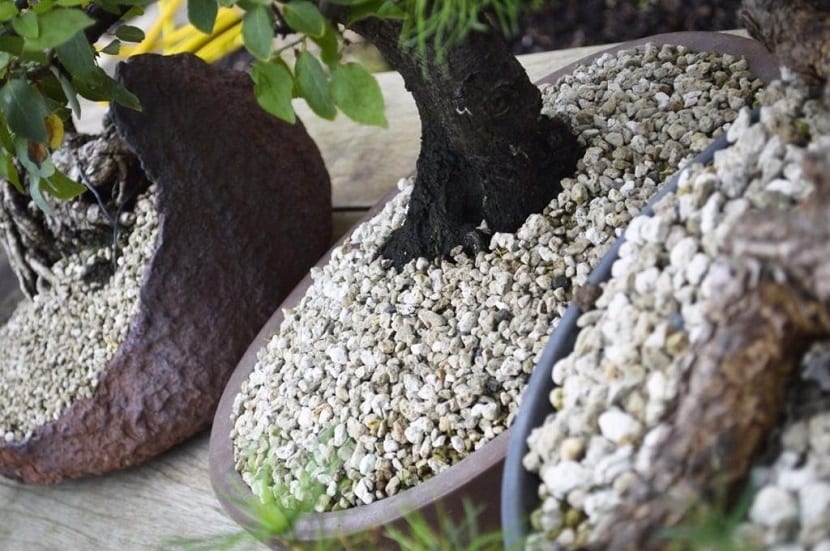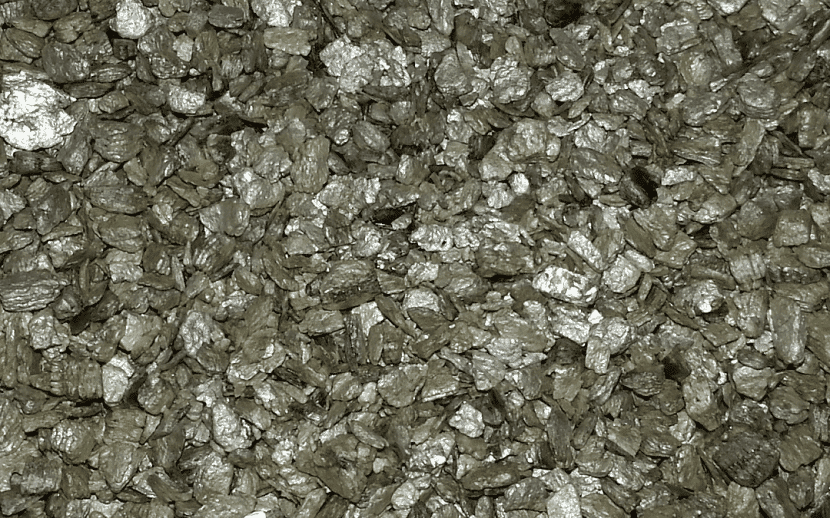
For our garden we use certain materials that help us to germinate our plants or that contribute to their good condition. In this case I come to talk to you about perlite and vermiculite.
Do you want to know what they are, what they are for and when we should use each one?
Pearlite

It is a crystal of natural origin that is quite abundant on the planet. It has a structure that contains 5% water inside and that is why it has the ability to expand when subjected to higher temperatures. When perlite expands due to higher temperatures it acquires a lighter and more porous texture.
In order to acquire perlite, we must measure it in volume, since its weight varies depending on the size of the particles and their moisture content. They are white balls with a high capacity to retain water and at the same time maintain high porosity. In addition, it is extremely consistent and therefore highly resistant to erosion. As the roots grow, they erode the pearlite. However, it is quite sturdy. Mixed with the substrate, it is used to aerate the mixture and give it lightness.
What do we use perlite for? Well, the pelita has various uses in orchards and gardening. For a start, perlite is ideal as a propagation substrate for all types of plants due to its neutrality. It works also in hydroponic crops and can be mixed with growing sand for the propagation of cacti and succulents. It is also used for those plants that spend more time in bags or pots and that must be moved. It is very useful on this occasion since it has great moisture retention capacity, porosity and light weight.
Among the characteristics of perlite we find:
- It is very light, weighing 125 kg per cubic meter.
- It has a neutral pH.
- Free of pests, diseases and weeds.
- Incorporated in substrates it is ideal because it favors good aeration and absorbs large amounts of water.
- It is not flammable.
- Its white color reduces the temperature of the substrate and increases the reflection of light, which is important in greenhouses and shade houses.
Vermiculite

Vermiculite is the generic name given to a mineral that comes from the micas family. It is composed of silicates of aluminum, magnesium and iron. It has properties similar to perlite, since with its laminar structure it can contain some water inside. When the temperature of vermiculite is raised rapidly, This expands and is called exfoliation. When this phenomenon occurs, a product with metallic reflections, brown in color, with low apparent density and high porosity results.
Among its characteristics we find:
- It is very light, weighing between 60 and 140 kilos per cubic meter, depending on granulometry.
- It has a neutral pH (7,2).
- Free of pests, diseases and weeds.
- Incorporated in substrates it favors good aeration and absorbs large amounts of water.
- Its metallic luster increases light reflection, which is important in greenhouses.
We can use vermiculite as a growing substrate to promote the propagation of all types of plants, provided there is good aeration thanks to its high capacity to retain water. It is also used to carry out seed germination tests for their health. It is useful for hydroponic crops like perlite. It is capable of retaining more water than perlite and helps plants retain nutrients and assimilate them well.
Vermiculite can contain potassium, calcium, magnesium, and ammonium necessary for growing plants. It's light, easy to handle, and mixes well with other ingredients, such as peat, coconut fiber, worm castings, and perlite, for seedlings and potting.
With this you already know which one to choose for your garden according to its water retention and the rest of its characteristics.
It is impossible to read this site because a Google ad appears in the middle of the page (a large ad by the way) that if you close it, it remains blank but does not disappear. Right now I am writing this message without being able to see what I write ... amazing.
Whether you use firefox or Chrome, install the Ublock Origin extension. All ads disappear
I have the following question: I have bought a bag of vermiculite whose capacity or volume (I do not know which term is the most appropriate) says that it is 5 L., but in weight it will be about 1 kg, as I have read that it should be mixed with the peat in a ratio of 10-20%; for 100 kg of peat, for example, how much vermiculite would you have to add?
Thank you
Hello Francisco.
If you want to mix it with 10kg of peat in that proportion, you can add the amount of about 2-3kg. For a little more nothing would happen either. Vermiculite is a good substrate for many plants and seedbeds, as it retains enough moisture and at the same time facilitates water drainage.
Greetings.
Good afternoon, vermiculite is the best substrate for potted plants or seedlings, right ???? for the main contribution that characterizes it. Which is to allow the plants to better assimilate the nutrients from the humus or compost. what an excellent product xD
Hello again.
Vermicuite is highly recommended for seedbeds, because it maintains moisture (and the nutrients in that water) but at the same time contributes to improving the drainage of the substrate.
Greetings.